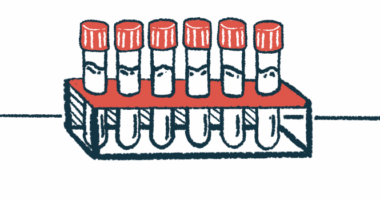Guest Voice: The ALS progression story we don’t often see
Aggressive forms of the disease tend to be underrepresented

Much of what people understand about ALS progression comes from the stories they see and hear most often — and those stories can be misleading.
Social media amplifies the voices of people who have lived with the disease for years, sometimes decades. This makes perfect sense: Slower progression means more time to build a platform, create content, raise awareness, and advocate for the community. These advocates provide an invaluable service, pushing for research funding and keeping ALS in the public eye.
But the nature of social media means the stories that gain the most traction — the most inspiring and hopeful — don’t always represent the typical experience. For many patients and families, these prominent narratives create unrealistic expectations about what lies ahead.
The fast track
I first noticed my ALS symptoms in mid-February 2024 and received my diagnosis in April. Like most people, I’d heard the commonly cited three-to-five-year survival statistic. Being young, healthy, and having access to excellent healthcare, I assumed I would easily exceed that upper limit. My 7-year-old son, with the fierce optimism that only children possess, reminded me that Stephen Hawking lived with ALS for 55 years — so why not me, too?
Since then, I’ve learned that the three-to-five-year figure reveals about as much as tomorrow’s forecast tells you about next month’s weather.
In most diseases, early detection improves outcomes. ALS operates by its own rules. A short interval between first symptoms and diagnosis often signals an aggressive form of the disease. Put simply, rapid progression doesn’t generate the uplifting content that social media algorithms favor.

Iomar Barrett tells his story to share an underrepresented ALS experience. (Courtesy of Iomar Barrett)
At the Mayo Clinic, my electrophysiology studies and blood work revealed what my neurologist called, with uncomfortable honesty, the markers of a “classic fast progressor.” My neurofilament light chain level — a protein that indicates nerve cell death — was 125 pg/mL, predicting a decline of roughly 1.5 points per month on the ALS Functional Rating Scale. In reality, the decline proved to be even faster.
The timeline was stark: March 2024 found me at the gym and swimming in the ocean. By late April of that year, I could no longer type effectively and had to make the difficult decision to close my business and retire. August brought a wheelchair. By April 2025, my voice was gone.
I share these details not to seek sympathy or suggest that my experience was uniquely challenging. Many face even more aggressive timelines. Instead, I offer this account because I think it represents a more common trajectory than the stories that typically reach public attention.
With a disease as devastating as ALS, having realistic expectations serves as a form of preparation. A truthful road map won’t prevent the journey’s hardships, but it can help patients and families navigate what’s coming. Sometimes the most compassionate thing we can do is help people expect the expected.
To submit your own Guest Voice for publication on ALS News Today, please email your idea to our columns manager at [email protected] with the following included in the subject line: “Guest Voice: ALS News Today.”
Note: ALS News Today is strictly a news and information website about the disease. It does not provide medical advice, diagnosis, or treatment. This content is not intended to be a substitute for professional medical advice, diagnosis, or treatment. Always seek the advice of your physician or other qualified health provider with any questions you may have regarding a medical condition. Never disregard professional medical advice or delay in seeking it because of something you have read on this website. The opinions expressed in this column are not those of ALS News Today or its parent company, Bionews, and are intended to spark discussion about issues pertaining to ALS.








Janice Barrett
I loved reading Iomar Barrett's Guest Voice: The Fast Track. We, too, experienced the "too fast" progression of ALS with my late husband. Our journey began a few years prior to Iomar's. With all the medical information we were given & any online information we could glean, we were stunned at the rate of progression after the diagnosis. His neurologist had already realized what we were dealing with, but insisted we do more definitive testing for our own peace of mind. Appreciate your printing his article.
Fran Finney
Iomar, I totally agree that fast progressors like you (and my husband) are very underrepresented!
ALS is a horrific disease, regardless of its speed of progression, but the anticipation of a slower progression can make fast progression even more difficult and cruel. Thinking they have more time (and encouraged by family, friends, and even medical professionals to believe they have more time) people make choices they would not have made. And then it's too late.
Thank you for submitting this!
Drew Childress
I was diagnosed with bulbar in June of 24. Immediately after we went through home videos and identified mid-2022 as the start of my vocal changes. March of 24 I experienced foot drop. Now I can't speak but still get around with a walker. At times I think I'm slow but fast for some muscles.
Peter Tam
You are so strong to write this truthful column!
John Snyder
I've been saying this for quite awhile joy greeting the article